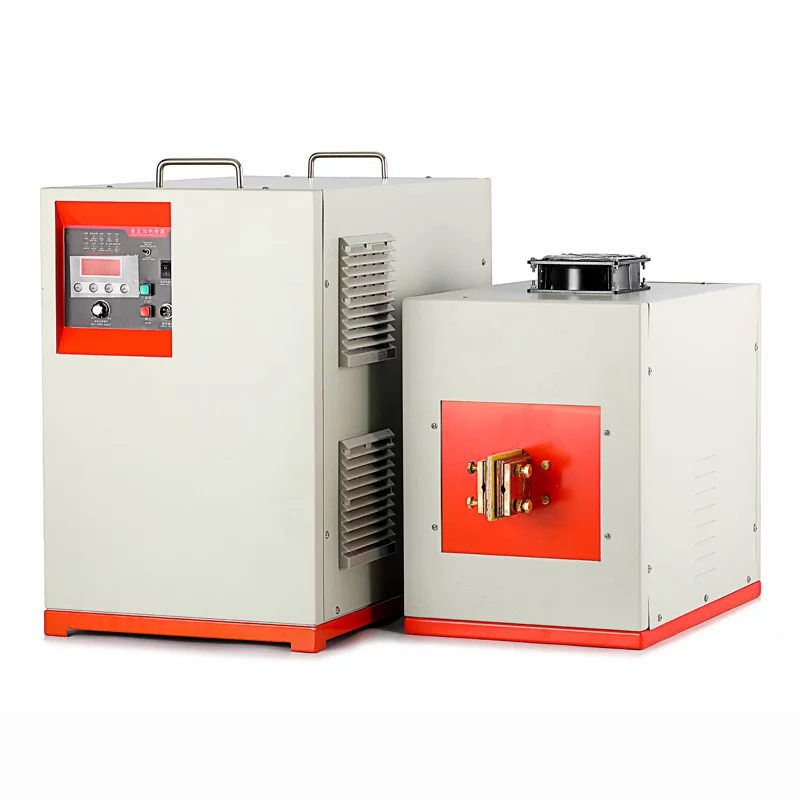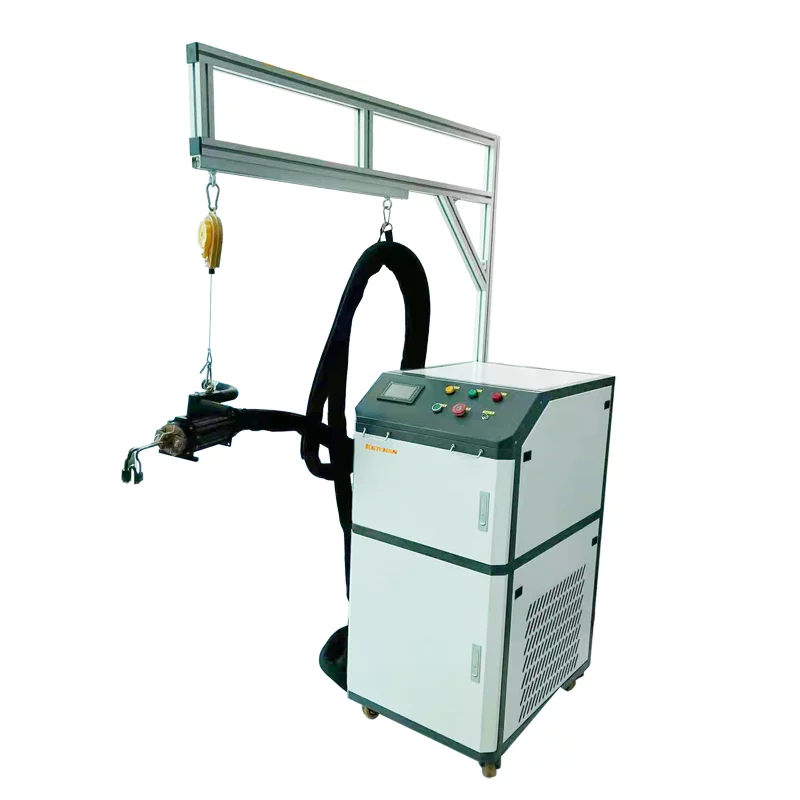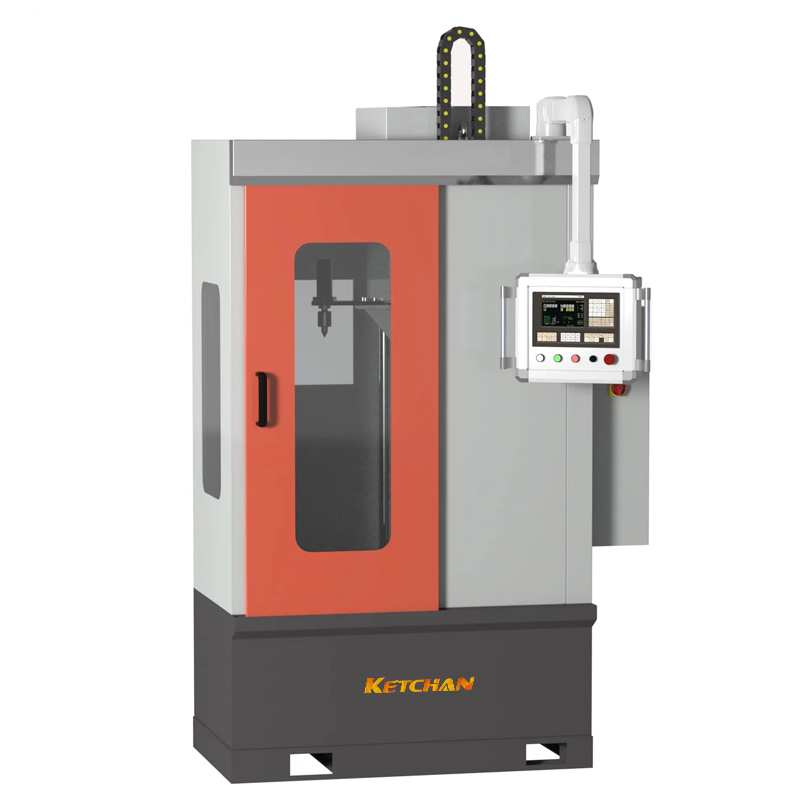Electromagnetic induction theory is mature, induction heating has been widely used heating method, especially in the surface heat treatment, has the advantages of simple process, small deformation, high efficiency, energy-saving and environmental protection, easy to realize the automation of the process, the excellent performance of the hardening layer, etc. With the continuous progress of industrial technology, induction heating is also more and more brilliant.
Induction heating equipment can be divided into power frequency, intermediate frequency, super audio frequency, and high frequency according to the power frequency, which has their own frequency range and heating power density.
Induction heating is mainly based on three basic principles: electromagnetic induction, “skin effect” and heat conduction.
When the alternating current passes through the conductor, the induced electromotive force will be generated in the conductor under the action of the formed alternating magnetic field. As the closer it is to the center, the greater the induced ELECTROmotive force is, the current of the conductor tends to the surface layer, and the current intensity decreases exponentially from the surface to the center, as shown in Figure 1.This phenomenon is known as the skin effect of alternating current.
Due to the action of the power electromotive force and the self-induced electromotive force, the maximum magnetic field strength of the codirectional current system is generated on the outside of the conductor surface, and the maximum magnetic field strength of the reverse current system is generated on the inside of the conductor surface, which is the proximity effect.
The proximity effect can be used to select the appropriate shape of the sensor on the surface of the processed parts for central heating so that the current concentration in the sensor width approximately equal to the area.
The smaller the distance between conductors, the stronger the proximity effect.
The phenomenon that the current through the induction coil is concentrated on the inner surface is called the ring effect. The annular effect is the result of the increase of the external surface self-induced electromotive force due to the action of the induction coil ac current magnetic field.
When heating the outer surface, the annular effect is favorable, but when heating the plane and the inner hole, it will significantly reduce the electrical efficiency of the inductor. In order to improve the efficiency of the plane and inner hole sensors, magnetic guides are often set up to change the distribution of magnetic field strength, forcing the current towards the surface where the part needs to be heated. A magnetic conducting body has the function of driving current to its opposite side.
The surface effect, proximity effect, and ring effect increase with the increase of alternating current frequency. In addition, the proximity effect and ring effect increase with the increase of the conductor cross-section, the decrease of space between two conductors, and the decrease of ring radius.
From the magnetic field intensity distribution equation can be obtained.
The basic equations of magnetic field intensity distribution show that eddy current intensity varies exponentially with surface distance. The eddy is highly concentrated in the surface layer and decreases rapidly with increasing distance. In engineering applications, it is specified that Ix drops to 1/e (e=2.718) of the surface as the depth of current penetration, expressed by. If the unit is Ω rho, cm, usable under type for the delta (mm)
Since the heat generated by the vortex is proportional to the square of the vortex (Q=0.24I0 Rt), the heat from the surface to the center drops faster than the vortex. Calculations show that 86.5% of the heat occurs in the delta lamellae, while no eddies occur outside the delta lamellae. The above provisions have been applied with sufficient accuracy.
The steel material resistivity rho increasing along with the rise of temperature in the heating process (within the scope of the 800-900 ℃, the resistivity of various steel basic same, about 10 e – 4 (Ω, cm); The permeability is basically unchanged below the loss of magnetism point (its value is related to strength), but suddenly drops to the permeability of vacuum =1 when the loss of magnetism point is reached. Therefore, when the temperature reaches the demagnetization point, the penetration depth of the vortex will increase significantly. The depth of eddy penetration beyond the loss of the magnetic field is called “thermal penetration depth”.Below the loss of magnetic point is called “cold eddy penetration depth”.
The change of eddy current intensity from the workpiece surface to depth is distributed according to the cold state characteristics at the moment before the inductor switches on the high-frequency current and the workpiece temperature starts to rise. When there is a thin layer on the surface that exceeds the magnetic loss point, the eddy current intensity at the internal junction adjacent to the thin layer changes suddenly, and the workpiece heating layer is divided into two layers. The eddy current intensity of the outer layer decreased significantly, and the maximum eddy current intensity was at the junction of the two layers. As a result, the heating speed of the high-temperature surface decreases rapidly, the temperature of the junction is accelerated, and rapidly moves inward.
This electrical heating method, which relies on eddy currents to continuously “step” into the interior, is unique to induction heating. Under rapid heating conditions, the surface will not overheat even when a large power is applied to the part.
When the thickness of the high-temperature layer loses magnetism exceeds the penetration depth of the hot eddy current, the depth of the heating layer increases mainly by means of heat conduction, and the heating process and temperature distribution characteristics along the section are basically the same as that of the external heat source, so the heating efficiency is much lower.
When heating surfaces to a certain depth, an eddy current “permeable heating” should be sought. In order to do this, the current frequency should be chosen correctly and the heating speed selected should be able to reach the specified heating depth in the shortest possible time.





